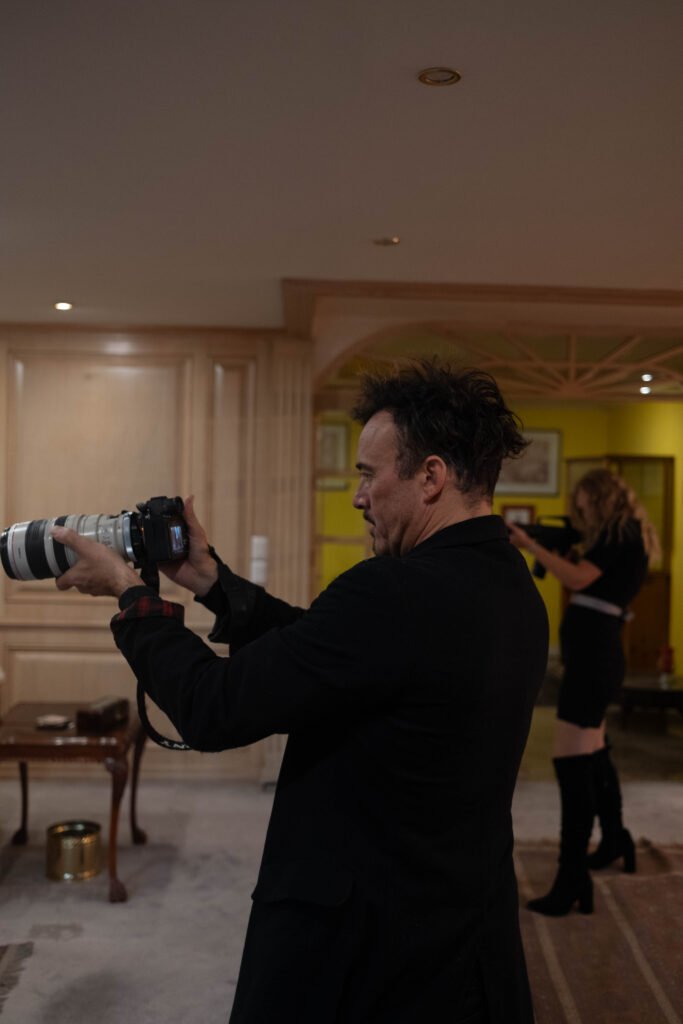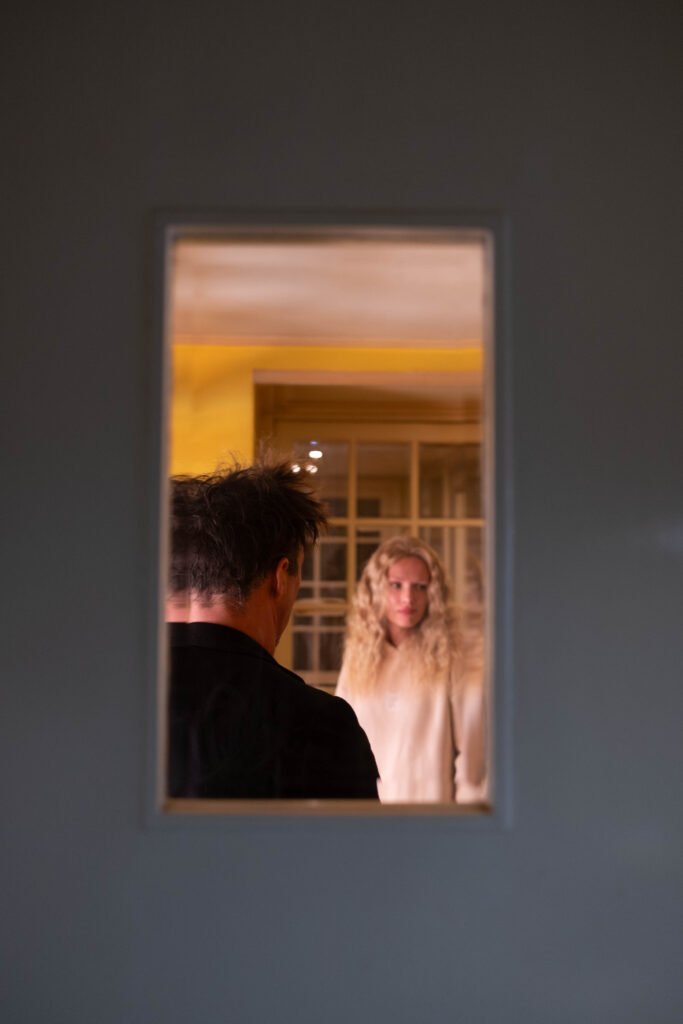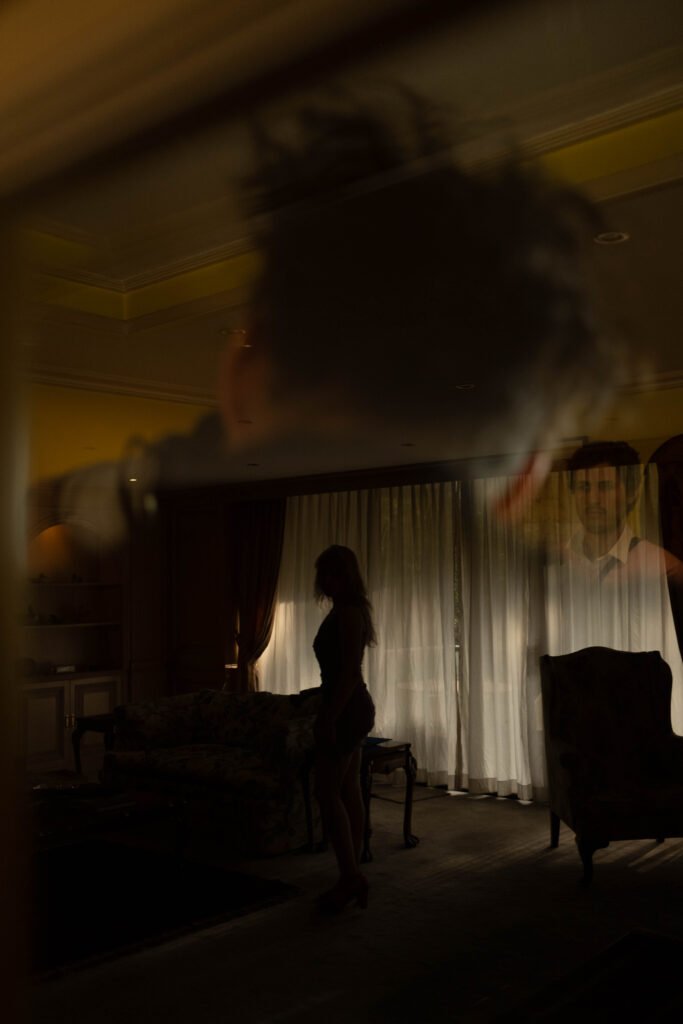
THE SHORT FILM
Shy men have slaves (The short film)
A CONCEPTUAL FILM.
Shy men have slaves (A silent cut of a movie).
ART INSTALLATION IDENTIFICATION CARD
Title: Shy men have slaves ( A silent cut of a movie)
Artist: Eduardo Arroyuelo Woolrich.
Duration: 23 minutes. Loop.
Format: video 4K. No sound.
Year: 2024

Shy men have slaves (A silent cut of a movie). This differs from Shy men have slaves (The short film) in many ways.
On the contrary
Shy men have slaves (The short film) Is the short movie version of the film and is meant to be told in a linear orthodox way. With a beginning middle and and end. In this version, an Explanation is added in letters and the music soundtrack goes with the silent movie.
THE THEME.
“Since the war against Ukraine. Russia adopted “специальная военная операция” (Special Military operation) avoiding calling it war. If you agree to the term ¨WAR” штраф и уголовное преследование (Fine and criminal prosecution.) happens to the Russian Citizen. This means if you are a Russian woman against war you are not under Russian government protection anywhere.” This girl calls it War. 96% of victims of police-reported human trafficking were women and girls. 81% of persons accused of human trafficking were men. 24% of victims of police-reported human trafficking were aged 17 and younger, 45% between 18-24, and 21% between 25-34.Jan 18, 2023
– https://www.publicsafety.gc.ca/cnt/cntrng
-crm/hmn-trffckng/abt-hmn-trffckng-en.aspx#
In 2022, more than 115,000 victims of human trafficking were identified worldwide. This is 25,000 more than in the previous year, and the second highest during the period of consideration. The number of human trafficking victims has significantly increased in the past decade.
https://www.statista.com/statistics/459637/
number-of-victims-identified-related-to-labor
-trafficking-worldwide/
In 2022, more than115,000 victims of human trafficking were identified worldwide. This is 25,000 more than in the previous year, and the second highest during the period of consideration. The number of human trafficking victims has significantly increased in the past decade.
https://www.statista.com/statistics/459637/
number-of-victims-identified-related-to-labor
-trafficking-worldwide/
THE INVITATION
Some time ago I spent some good years collaborating with a lot of friends, many being now very successful conceptual artists. Back in the day, we shot 8mm, 16mm, and a lot of Mini DV.
Eventually, I moved to a narrative landscape of storytelling always missing the freedom and anarchy of Conceptual Art.
Last year my friend Santiago Merino (part of that sophisticated group of artists) invited me to join him and his colleagues in a show as an artist. I immediately had a video piece in mind. But that piece was thought to be shown in a specific space.
A few months after he formalized the invitation. A space intervention was what he had in mind.
He had already the name of the show. “Timid Men had slaves” He mentioned to me he was reading a book about slavery and that caught his mind for a while. It also caught mine. I started my creation process.
The book was called “The Hemingses of Monticello”. In the chapter entitled “Calculating the Odds” The slave owners were described. The one that jumped off the page was the peculiar description: “Timid men Held slaves”.
THE IDEA.
All You Need To Make a Movie Is a Girl and a Gun…
I had an idea in mind for a film to be shot with an ex-girlfriend. A vulnerable foreign woman with no knowledge of the language in a huge city.
I thought of the next premise:
What if she got retrieved from all her belongings? no money? no phone? no passport?
What would happen? what would she do? how would she respond?
A few days later from the invitation to the show I met a Russian girl in a café. She was perfect.
I started writing.
My work is always rooted in “The Medicine”. “The medicine” is a message hidden in the film to be delivered urgently to society. That is why I make films. Human trafficking and women’s submission was the closest to slavery that I relate to.
THE PIECE
Pieza contra-tecnológica
“Pieza contra-tecnológica” ( The opposite side of technology).
I never liked films where the characters talk. I like films to be expressed in either Images, Actions, or behavior.
After many years of digital immersion, I went back to Lo-Fi. I reviewed one of my favorite creators; Buster Keaton. I went all the way to the origins of Hollywood and cinema. This took me to the next question:
If in a parallel universe movies didn’t evolve to Sound, color, and cinematic language how would we see film today? If movies were still silent, and monochromatic how would they be?
I went ahead to create this “Pieza contra-tecnológica”. Silent, Black and white, No spoken language, and old-school shots and editing. Jump cuts. Aggressive Full shot to close-up cutting, etc.
The result of the finished piece was pretty interesting to me. The piece looked like a short film. The film grew and the Conceptual piece became the Short film.
THE SHOW
Jean-Michel Basquiat visitó Los Ángeles entre 1982-84 para alojarse en la casa de Larry Gagosian en Venice Beach y producir con la asistencia de Fred Hoffman una serie de serigrafías en gran formato, siendo dos de ellas expuestas en el West Beach Café en 1983. Es muy sugerente, ver arte de Basquiat montado en el comedor de un modesto restaurante, como si Jean-Michel fuera un inseguro joven artista quien apenas se inicia y comienza de manera despistada y equivoca su periplo de exposiciones; cuanto más, que una de las serigrafías de limitada edición expuestas en este Café, Untitled (Return of the Central Figure), 1983, fue subastada el 16 de noviembre del 2018 en Christie’s por USD 2,532,500.
Estas referencias tienen en esta exposición un trasfondo más delicado y alarmante. En los últimos años, las draconianas desventajas laborales post neoliberales de la era Thatcher-Reagan impusieron la llegada del precariado, nueva clase social del proletariado, y que implica la explotación agudizada de los trabajadores después de la crisis de las hipotecas Subprime de septiembre del 2008, entorno en el que el arte ha pasado de ser una estrategia de inversión a un terreno de desigualdad laboral; debido a ello han surgido clases sociales dentro del propio mundo del arte donde encumbrados galeristas, curadores y coleccionistas acumulan poder y se la pasan viajando en avión, especialistas y académicos al servicio de los anteriores realizan investigación en arte con limitada repercusión y a la mayoría de los artistas se les escatima el mínimo pago.
En México, después de la crisis que implicó la cancelación de la exposición de Hermann Nitsch durante 2015 en el Museo Jumex, se ha disparado la autocensura y la baja de calidad en el arte, siendo que los artistas Millennial han buscado una bobalicona aceptación del medio del arte contemporáneo a través de infantilizar su producción o al participar en las modas de arte objetual pseudo arqueológico, artesanal o etnográfico y una pintura figurativa, íntima y personal, irónica-cínica, nostálgica o confesional, pero sin memoria histórico-estética; tara paralela al surgimiento de pintura abstracta mediocre que resulta mero formalismo zombie o remedo del pasado.
Ismael Merla, artista quien se alejó temporalmente del mundo del arte pero ha seguido trabajando en desafío así al dominio del currículum sobre el arte y su genuino compromiso; Eduardo Arroyuelo, experimentado actor quien en su ópera prima, dirigió la película, El Efecto Mandela (You Can’t Always Get What You Want), 2021, revolucionando al modelo de financiación del cine en México y siendo laureado en 13 festivales de cine independiente y experimental en Cannes, Berlín, Europa del Este, Londres, India, Roma, Toronto, después de ser rechazado múltiples veces por el fondo estatal Eficine, y quien a pesar de lo logrado por su película sigue siendo todavía poco reconocido en México; y Santiago Merino, pintor con una pintura innovadora y depurada desarrollada en tres lustros y expuesta en museos, quien sorprendentemente, ha sido pasado por alto en galerías ceñidas a las modas y estándares que dicta el mercado.
Evocando al Basquiat expuesto en el West Beach Café de 1983, el íntimo y acogedor entorno de un bar como el Bengala emerge como una realidad paralela para estos artistas, ya que Santiago cura esta exposición a partir de inspirarse en el libro de la historiadora norteamericana, Annette Gordon-Reed, The Hemingses of Monticello: An American Family, del 2008, y donde en el capítulo Calculating the Odds (Calculando las Probabilidades), se menciona la relación entre el tercer presidente de los EU, Thomas Jefferson (1743-1826) y su esclava afroamericana Sally Hemings (c. 1773-1835), y con quien al parecer Jefferson tuvo seis hijos, entorno en el que se menciona, “Los hombres tímidos tenían esclavos tan seguramente como los hombres demasiado violentos también los poseían”, y donde en un mundo paralelo, los hombres tímidos o violentos de Gordon-Reed equivalen en el mundo del arte a galerías, funcionarios, curadores, coleccionistas y los artistas igual a esclavos.
Este sugerente paralelismo es desarrollado sutilmente por esta exposición, donde se insinúa como el ninguneo al que son sujetos los artistas, el dominio tecnocrático del currículum sobre el arte y la obligación a tener éxito primero en el extranjero son la intuición que anuncia una severa crisis y cambios radicales en los paradigmas que rigen al arte y la cultura en México.
Eduardo Egea. Febrero 2024
Conclución.
Instalación de video con Cortomertraje pa’ llevar.







Foto making of: Timofei (Tima) Brilev
